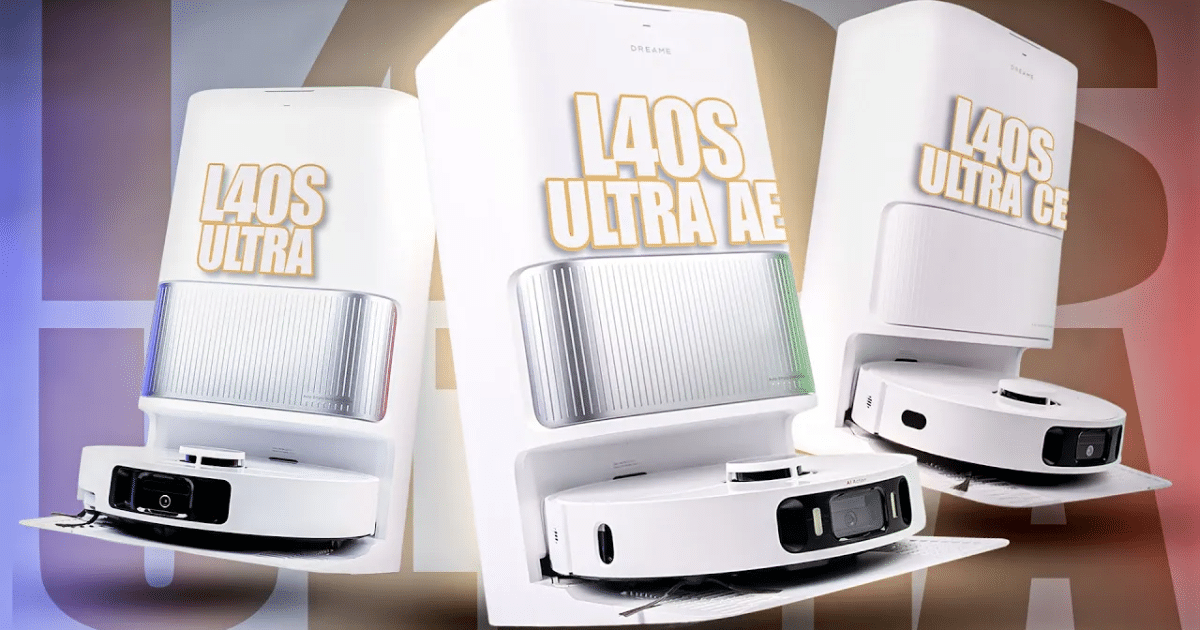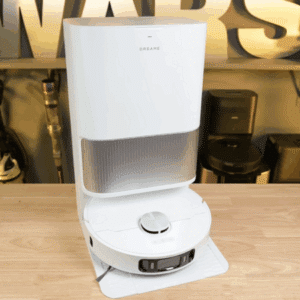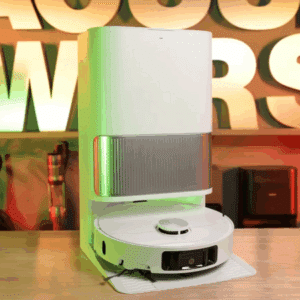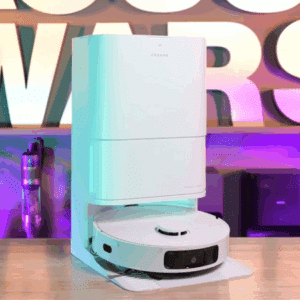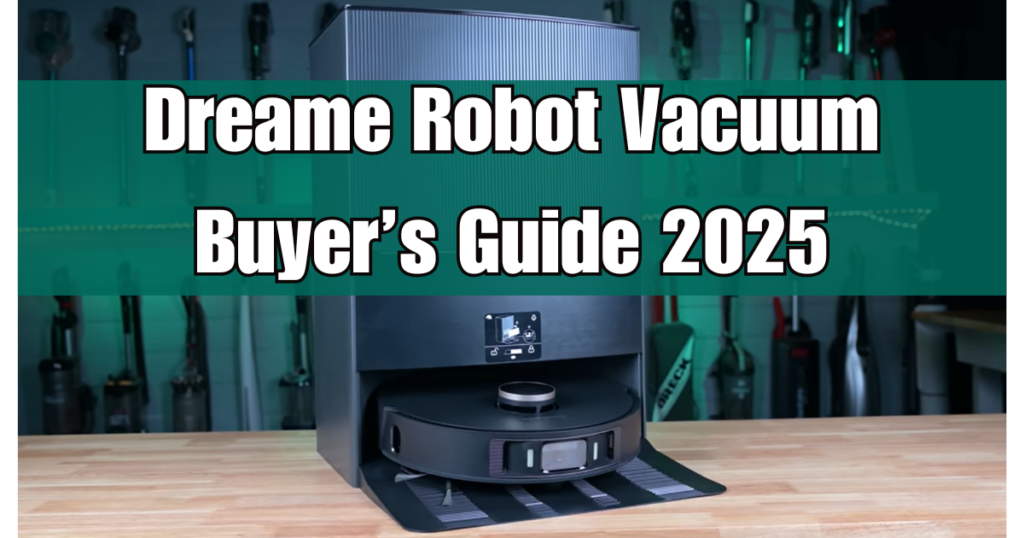The L40s series represents Dreame’s mid-tier lineup of robot vacuums, combining many of the advanced specs and features found in its higher-end models but at more attainable prices. We purchased all three new versions—the L40s Ultra, L40s Ultra AE, and L40s Ultra CE—and put them through our full range of evaluations. One model clearly stood out as a near-perfect balance of performance and value, while the other two were solid but less impressive. In this Dreame L40s series review, we’ll explain the key differences between them and reveal why one earned our pick for Best Value of the Year. It currently ranks among the top three on the Vacuum Wars Top 20 List.
Dreame L40s Ultra, AE, and CE Overview and Pricing
Of all three, the L40s Ultra is the most expensive. The Dreame Ultra AE is in the middle, and the Ultra CE is the most affordable option. However, all three are considerably cheaper than Dreame’s flagship, such as the L50 Ultra robot vacuum.
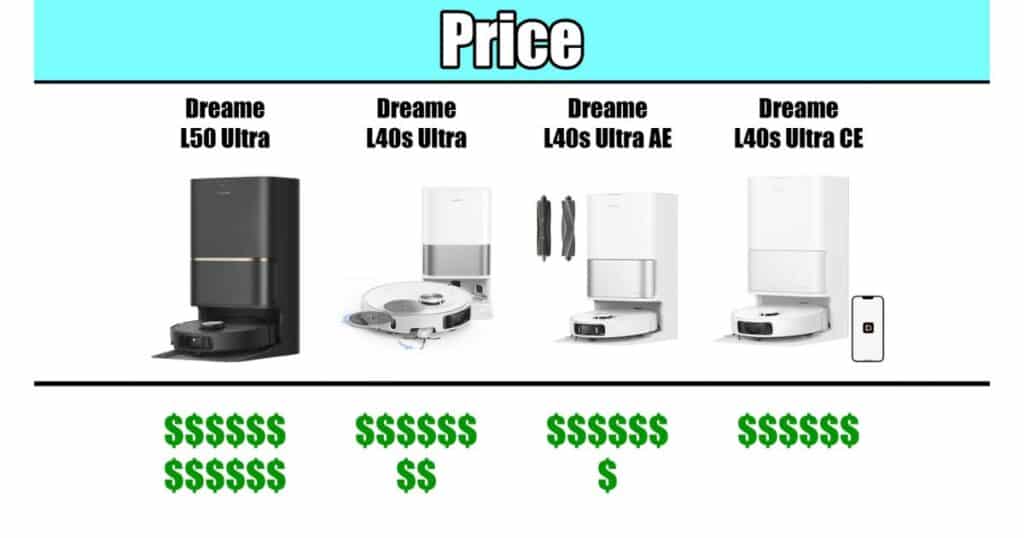
Each comes with an auto-empty bin, which means the robot empties the contents of its dust bin into a disposable bag when it returns to base. They also include the same basic spinning mop pad system and have automatic mop pad washing, drying, and auto tank refilling. But as you’ll see shortly, there are some minor differences in terms of related features.
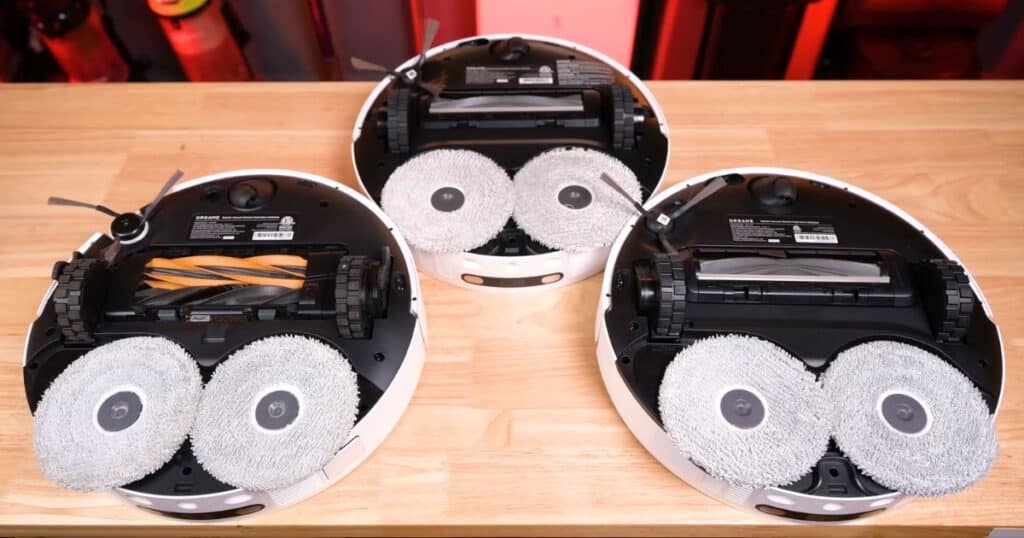
Exclusive Features: L40s Ultra vs Ultra AE and Ultra CE
Extending Side Brush for Corner Coverage
Dreame’s L40s Ultra is the only one with an extending side brush for better corner coverage. And it worked really well in evaluations, noticeably improving debris removal from corners.
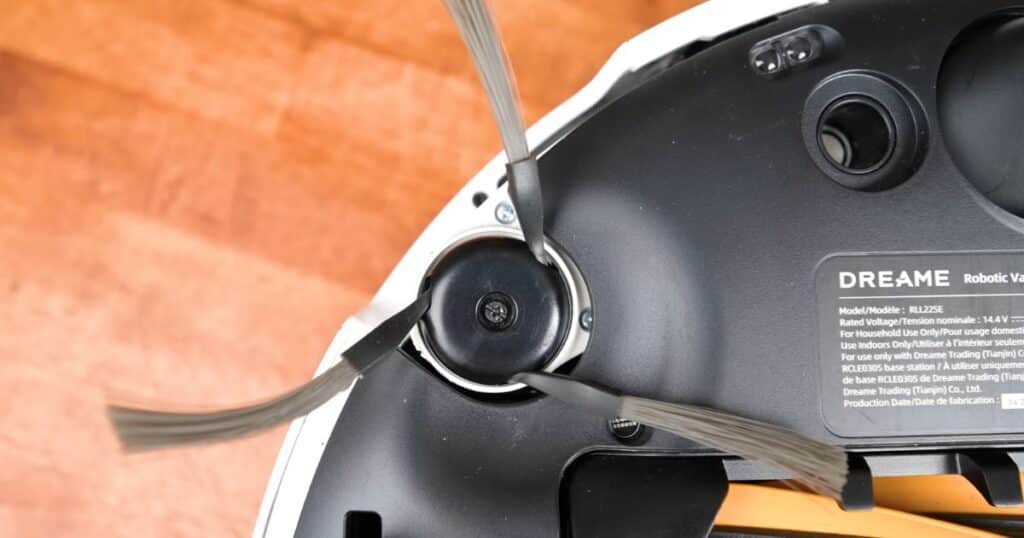
Hair Tangle Prevention: HyperStream DuoBrush Results
The L40s Ultra is also the only one with Dreame’s new HyperStream Detangling DuoBrush, which channels hair to the center of the brush, preventing it from getting tangled.
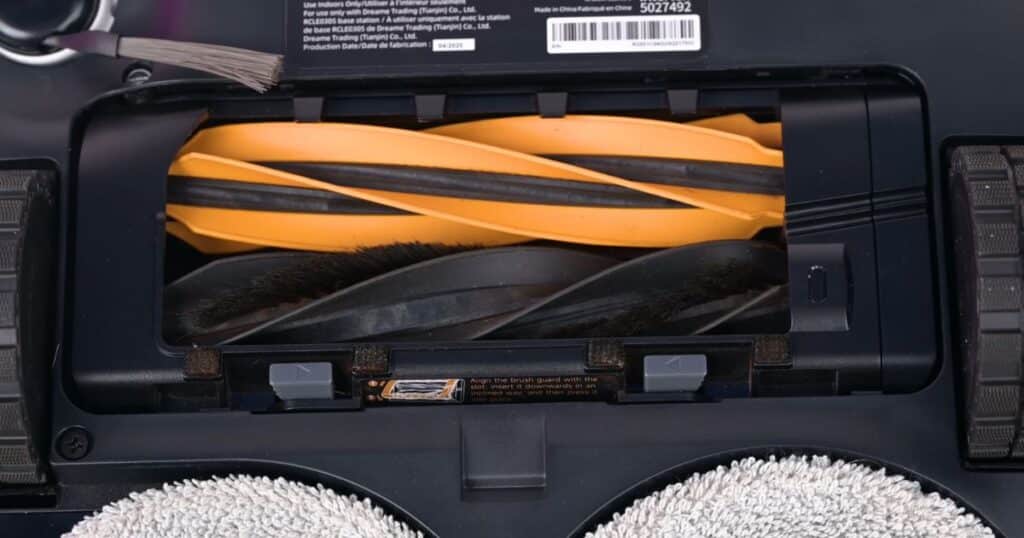
In fact, the L40s Ultra got a perfect score (zero tangles) in our 7-inch hair tangle evaluation. The other two (which include a standard and TriCut brush roller) got a perfect score as well, but only when we used the TriCut brush.
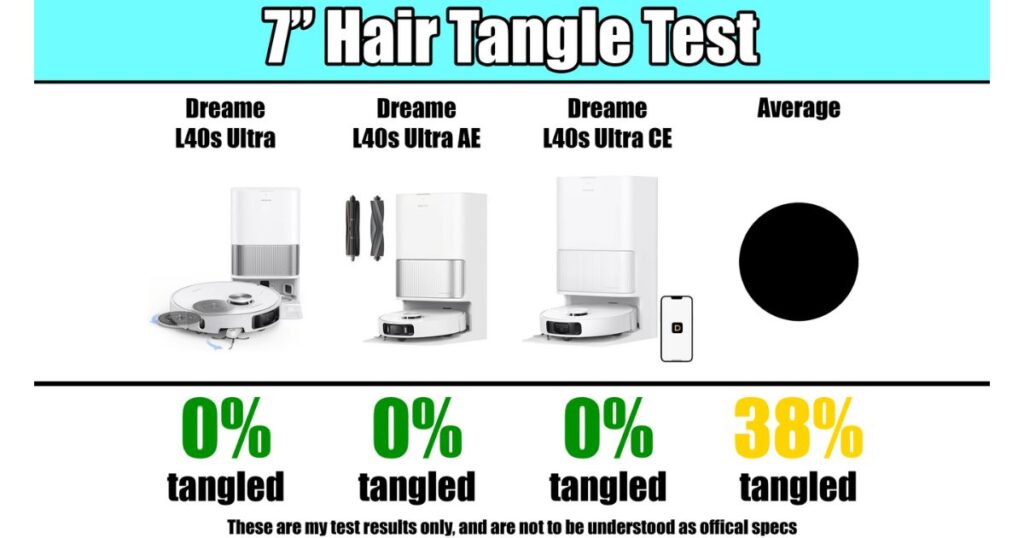
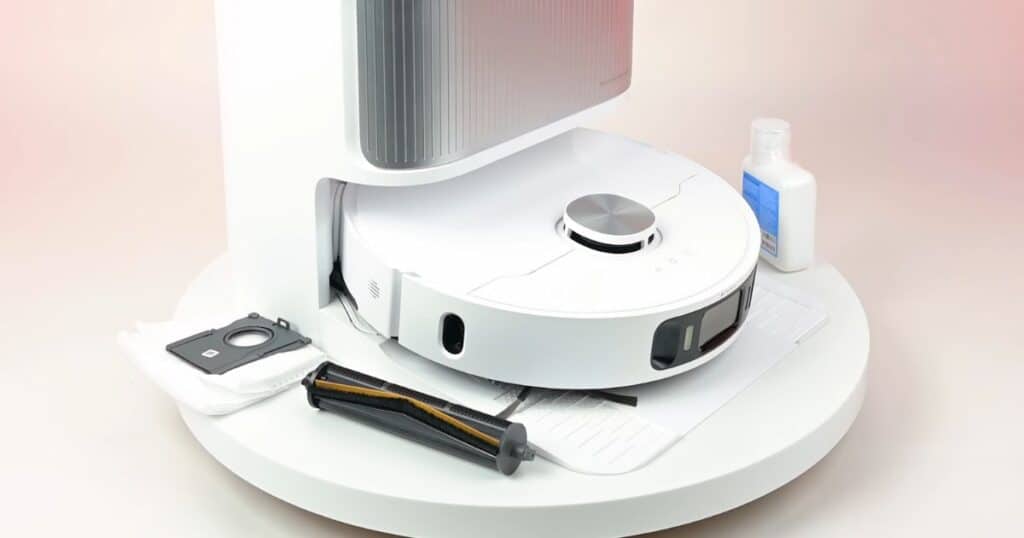
Mopping System Design and Key Differences
L40s Ultra is the only model that can leave its mop pads at its base using a magnetic system. This allows it to vacuum carpets without the mop pads attached and return to pick them up for mopping hard floors later, which reduces the chances of getting carpets wet.
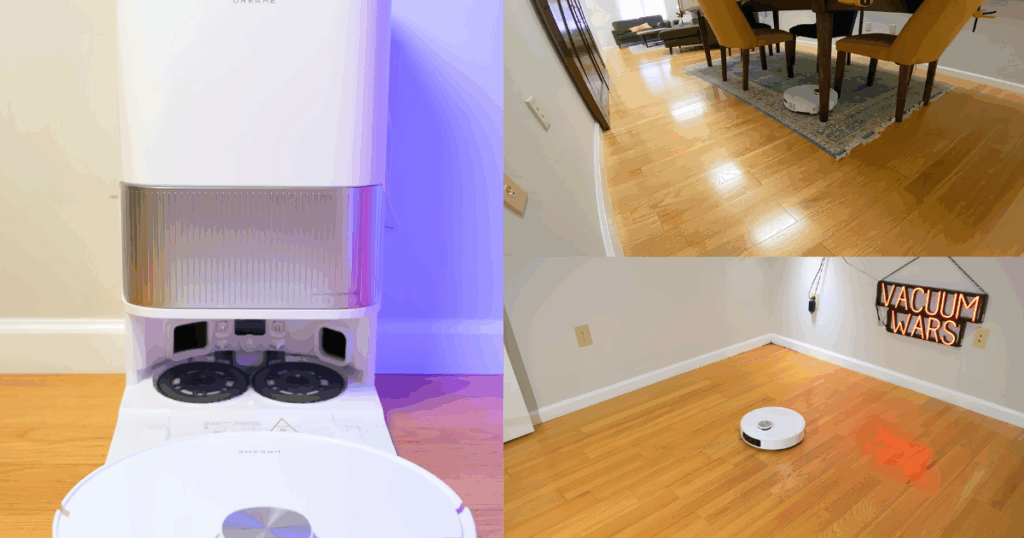
However, all three robots have auto-lifting mop pads. That means when they sense carpets, the pads lift to keep them dry. So, they can vacuum and mop homes with both hard floors and carpets in one run. It’s essentially another way of accomplishing the same thing that would occur by leaving the mop pads at the base.
Both the Ultra and the Ultra AE have one automatically extending mop pad for edge coverage, but the cheaper Ultra CE does not.
The Ultra and the Ultra AE also have hot water mop pad washing, whereas the Ultra CE uses cold water to wash its mop pads.
Threshold Climbing and Easy Leap System
Additionally, the L40s Ultra is the only model with Dreame’s new Easy Leap system. This uses a set of auxiliary wheels to lift the robot vacuum to climb over single thresholds up to 22 mm and two-tiered thresholds up to 40 mm.
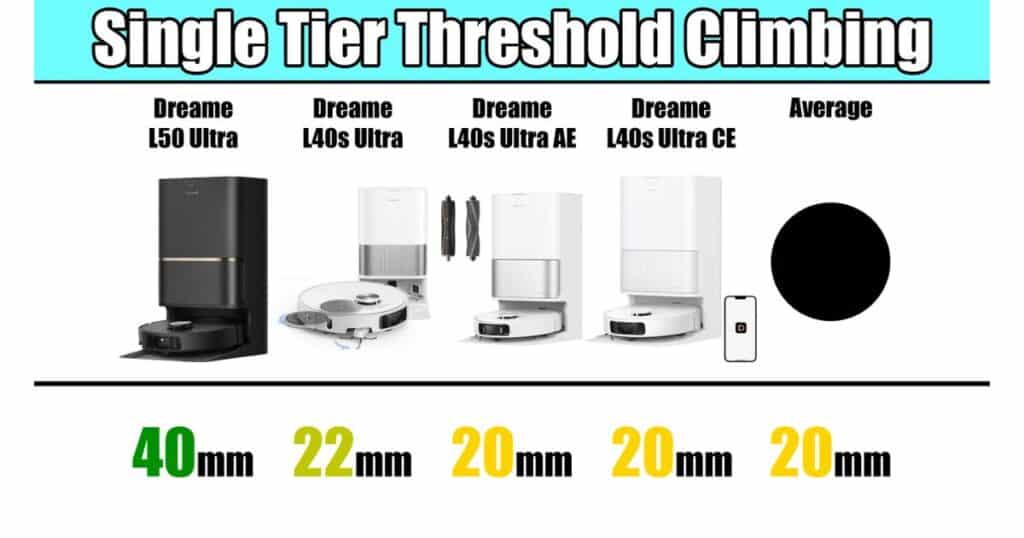
While this is a good feature, it shouldn’t be confused with the Dreame L50’s Pro Leap system, which climbs thresholds almost twice that height. We’re not even sure why Dreame is advertising this feature because many robot vacuums can cross 22 mm thresholds even without a system like this.
While threshold climbing is mostly a physical capability, the next area—obstacle avoidance—shows major differences in Dreame’s sensor and software design.
Obstacle Avoidance: L40s Ultra vs AE vs CE Performance
Obstacle avoidance is one of the most essential features, and the hardest one to spot just by reading the spec sheets. All three robot vacuums feature obstacle avoidance sensors at the front, which help them avoid household objects that could cause them to get stuck. But each system isn’t the same in terms of quality.
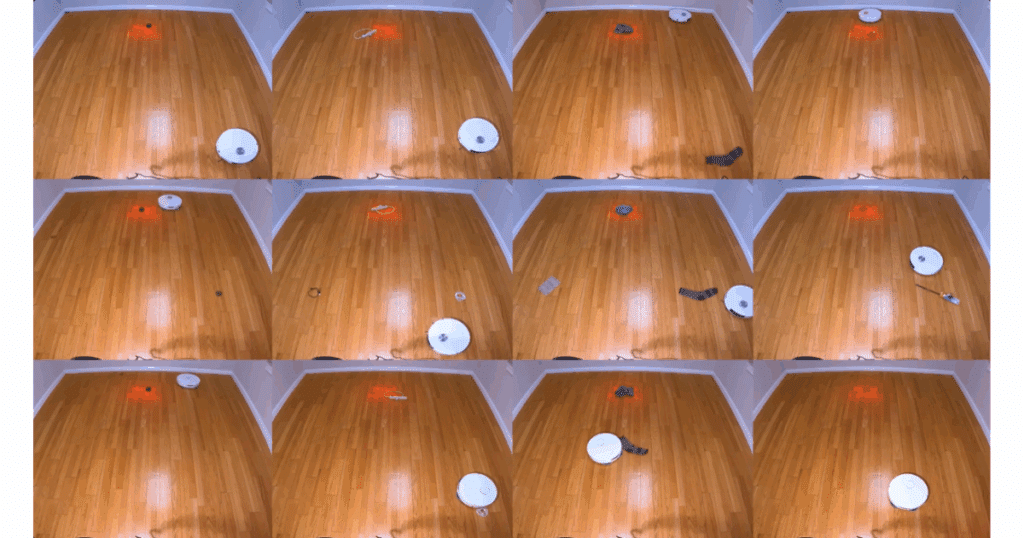
The cheapest one (the Ultra CE) and the most expensive one (the Ultra) share the same obstacle avoidance systems, which isn’t ideal. The L40s Ultra AE is the only one with decent obstacle avoidance hardware and software. It’s a confusing decision from Dreame, and it really makes a huge difference.
For example, the Ultra and the Ultra CE received approximately the same scores, 7 and 8 out of a possible 24 in our obstacle avoidance evaluations. These are some of the lowest scores on record. In contrast, the Dreame L40s Ultra AE got an above-average score of 19, which is a night-and-day difference.
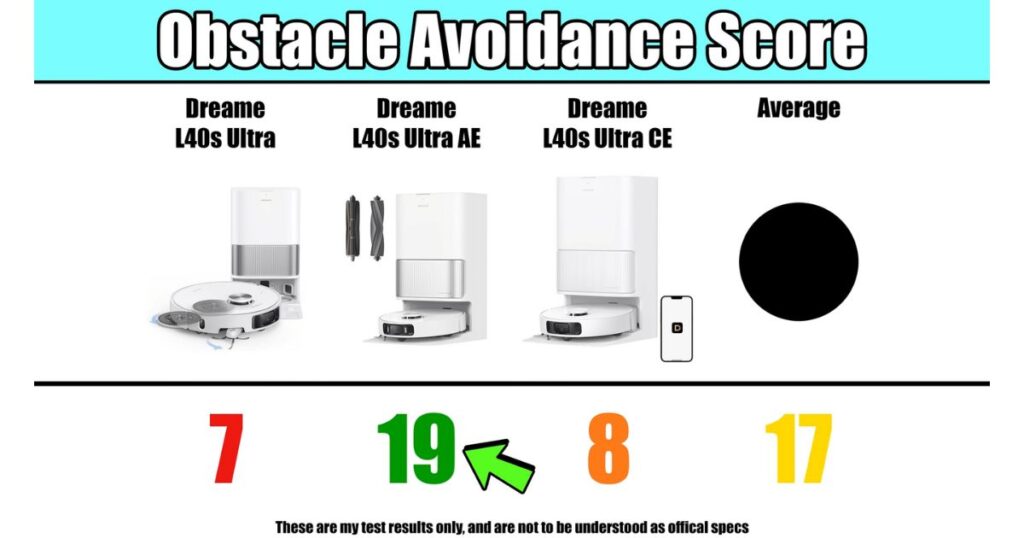
And it’s not just about obstacle avoidance. Having the upgraded sensors and software makes the AE better and smarter at navigating complex situations overall.
Cleaning Performance and Debris Pickup Tests
Each robot vacuum performed its basic job well, collecting debris from the surfaces of hard floors and carpets. In our carpet deep clean evaluation, which assesses their ability to remove deeply embedded sand from carpets, they all performed above average.
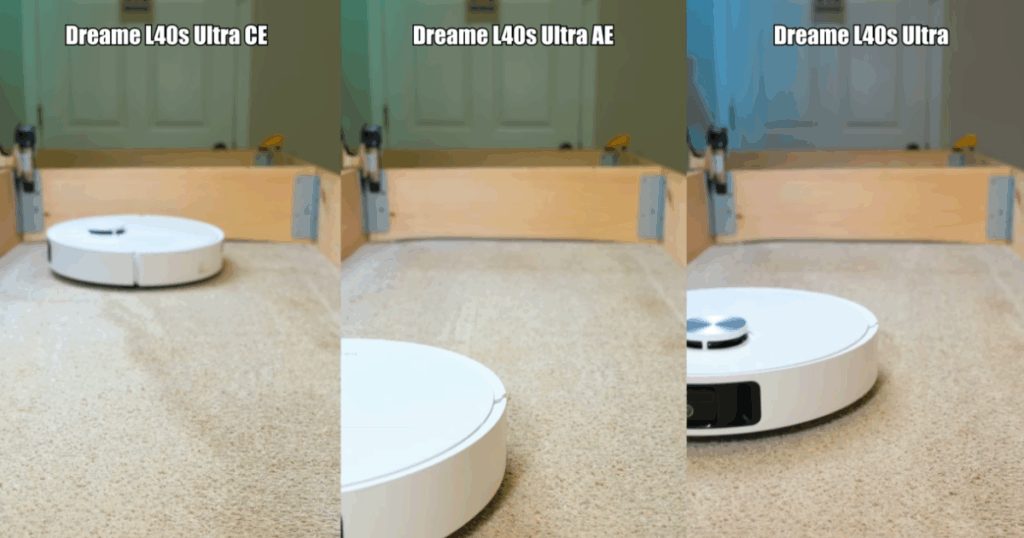
However, the L40s Ultra was a standout, scoring 92%. It tied for the third-highest score on record out of over 150 robot vacuums evaluated. That further solidifies our view that robot vacuums are getting better at deep cleaning. It’s a trend we’ve been seeing over the past year or so.
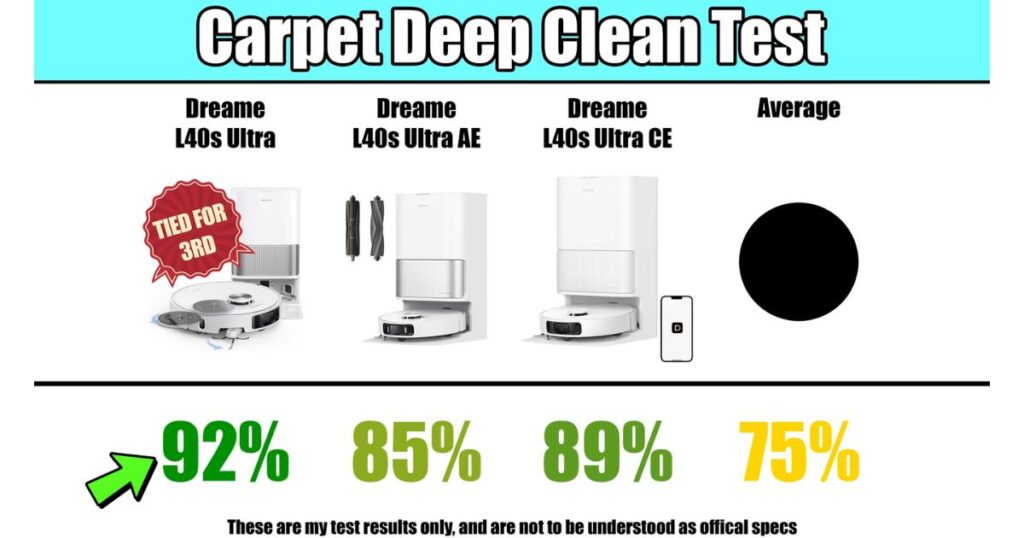
Also, both the L40s Ultra and the L40s Ultra AE performed well in the 2.5-inch pet hair pickup assessment. The cheaper CE model lagged slightly behind.
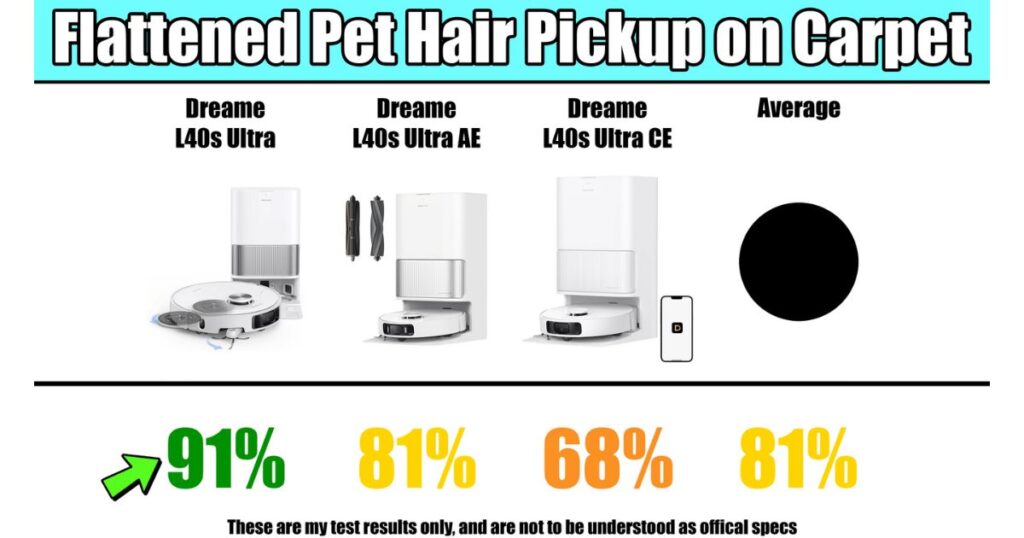
With the crevice evaluation, the L40s Ultra AE performed slightly better than the others, but all were relatively decent.
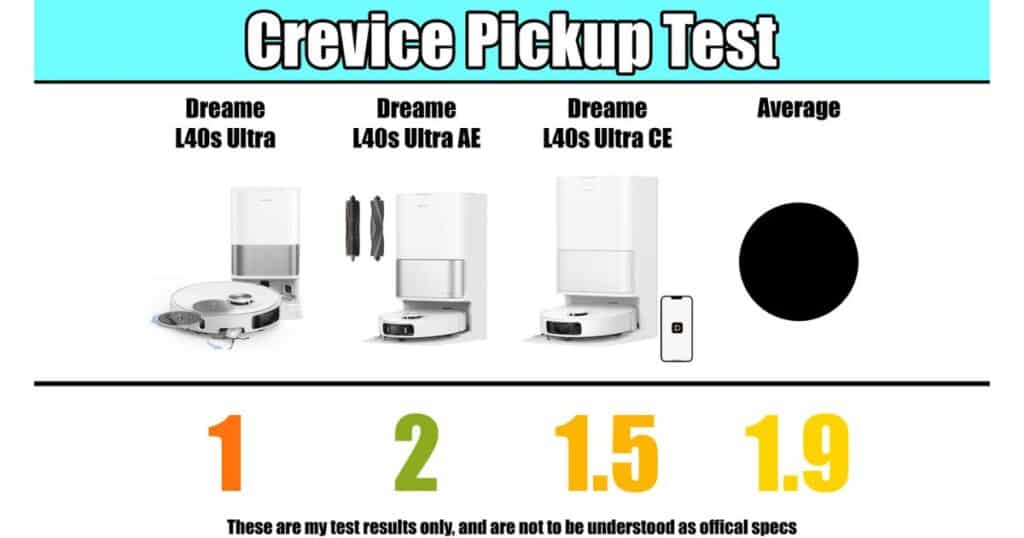
Mopping Performance and Water Usage Results
All three L40s series use the same two-spinning mop pad system, which exerts downward pressure on stains, and they feature adjustable water levels in the app.
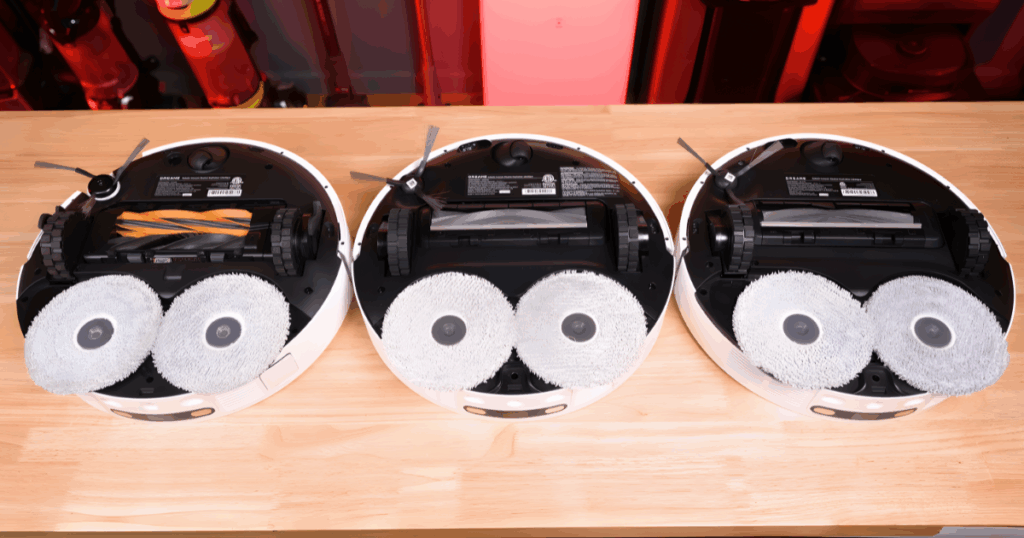
We assessed their mopping ability by considering a combination of two factors:
- The first is how well they do on our dried-on stain mop evaluation.
- The second is the amount of water they used during the assessment.
We found that using a lot of water may help remove stains, but it leaves streaks behind. So, the goal is to remove the stains without excessive water usage, and the Dreame Ultra AE had the best water usage score.
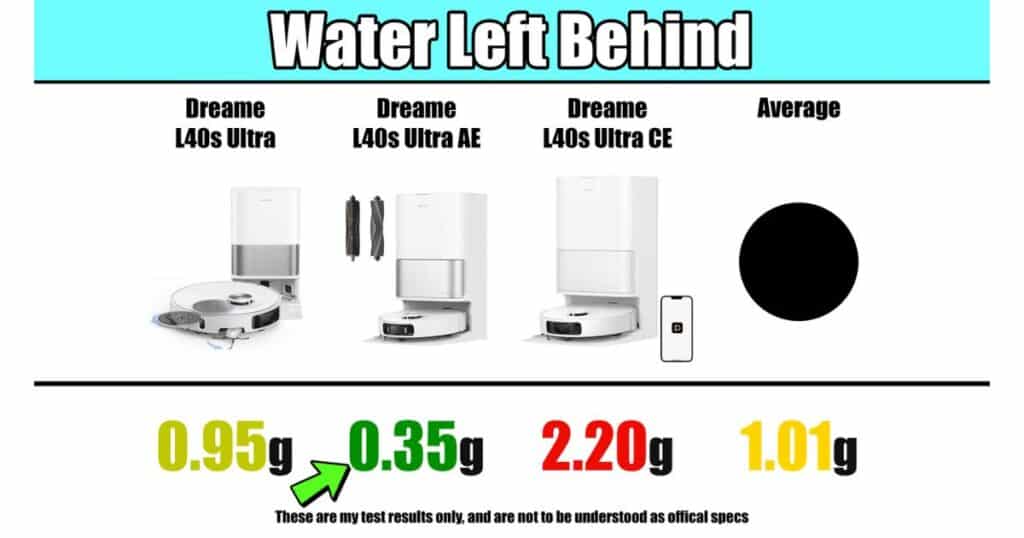
When we combine both factors, the AE was the best mopping performer, followed by the Ultra and the CE. However, all three were generally good at mopping.
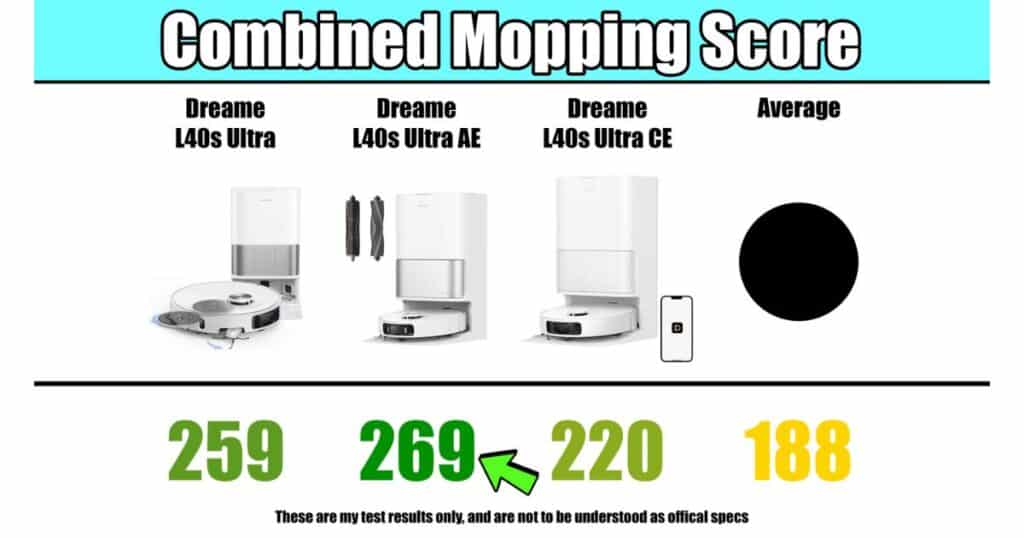
Navigation, Mapping, and Battery Efficiency
They all use the same basic top-mounted LiDAR system to map the floor plan and navigate in efficient rows. In our navigation evaluation (where we run them on a fixed floor plan), the L40s Ultra AE was the best, but it essentially tied with the Ultra. In contrast, the CE was significantly behind, although we’re unsure why.
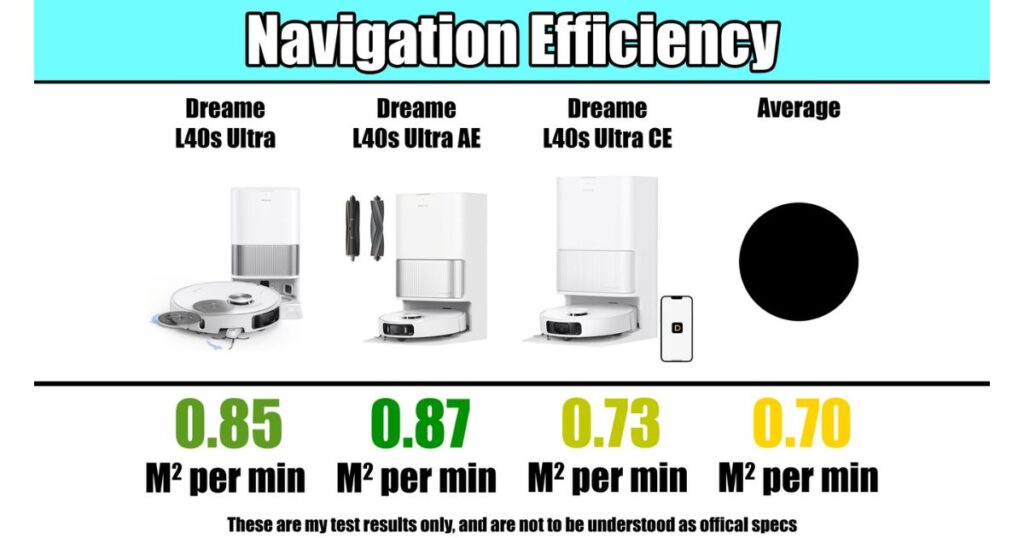
In terms of battery life and efficiency, they were all comparable and quite good. However, the L40s Ultra AE was still better, achieving 2.63 square meters per minute in our battery evaluations. That’s good for an estimated 2400+ square feet per charge.
Overall, all robot vacuums were above average in our battery and coverage assessments.
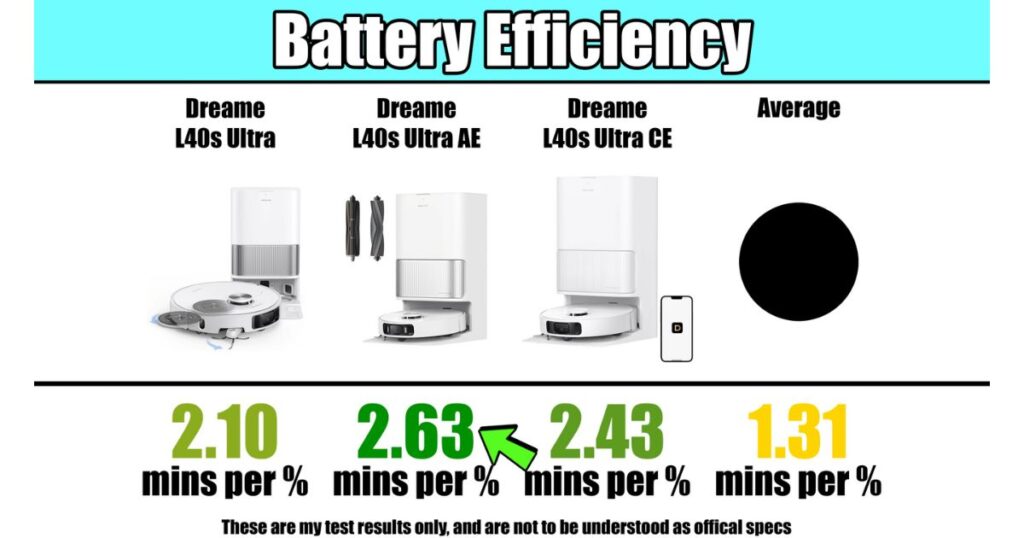
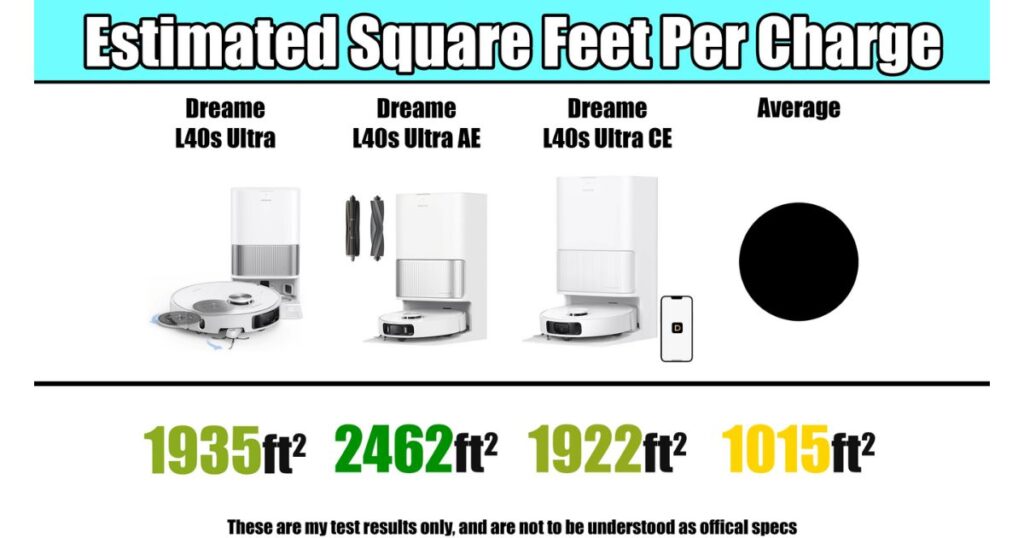
Final Verdict: Dreame L40s Ultra, Ultra AE, or Ultra CE?
After evaluating all three models in the L40s lineup, a few clear takeaways emerged.
The Dreame L40s Ultra AE proved to be the standout of the group, offering the best combination of cleaning power, smart navigation, and obstacle avoidance—at a lower price than the Ultra. It currently ranks within the top three on the Vacuum Wars Top 20 List, which is an impressive achievement for a mid-tier model.
The L40s Ultra still performed well overall and landed in our top 10, but its poor obstacle avoidance scores held it back. Meanwhile, the L40s Ultra CE didn’t make the Top 20, yet it remains a capable option for those focused primarily on price.
Ultimately, all three models offer strong value for their respective price points, but the L40s Ultra AE delivered the most balanced and reliable performance across our evaluations—making it our clear choice for Best Value of the Year.

The Dreame L40s Ultra AE is a robot vacuum-mop combo equipped with 19,000 Pa Vormax™ suction, a TriCut 3.0 anti-tangle brush, and intelligent obstacle avoidance via RGB AI + 3D structured light. It has a 5,200 mAh battery, a 395 ml dust box, and clean/dirty water tanks of approximately 4.5 L / 4.0 L. The all-in-one PowerDock auto-empties for up to 100 days, washes pads with 75 °C hot water, hot-air dries, auto-cleans the washboard, and auto-adds solution. App control and Alexa voice control are supported. For homes with pets, it recognizes pet-area objects (bowls, litter boxes) so you can clean around or avoid them, and it includes live video monitoring with two-way audio for pet check-ins. See additional info
Price as of December 7, 2025
Auto Empty Station: Self Empties Debris | Washes Mop Pad | Washes Mop Pad with Hot Water | Dries Mop Pad | Dries Mop Pad with Heated Air| Self Cleaning | Dirty Water Sensor
Mopping: Lifts Mop Pads on Carpets | Extending Mop Pad for Hard to Reach Areas
Hardware: 20mm Threshold Crossing | Removes Hair from Brush Roll
Performance: Carpet Boost Settings
Mapping / Navigation: Multi Level Maps | Virtual Barriers and No Go Zones
Obstacle Avoidance: 120 Objects Recognized
Pet Features: Live Video Monitoring | Pet Checkup or Similar
Controls: Third-Party Voice Control Options
| Scores | Dreame L40s Ultra AE | Average Robot Vacuum Tested |
|---|---|---|
| Vacuum Wars Overall | 3.74 | 2.58 |
| Features | 3.88 | 3.28 |
| Mopping Performance | 3.39 | 2.39 |
| Obstacle Avoidance | 3.96 | 3.41 |
| Pet | 4.58 | 3.42 |
| Navigation | 4.88 | 3.21 |
| Battery | 5.0 | 2.56 |
| Performance | 4.17 | 3.56 |
| Official Battery Life: 180 Minutes | Navigation Type: Spinning Lidar |
| Official Suction Power: 19000 Pa | Dust Bin Size: 395ml |
| Obstacle Avoidance Type: Single Camera, LED, & 3D Structured Light | Objects Recognized: 120 |
| Multi Level Maps: Y | Virtual Barriers: Y |
| Detergent Capacity: unknown | Disposable Bag: 3.2L |
Dreame L40s Ultra AE
Dreame Robot Vacuum Buyers Guide – 2025
We outline the key distinctions among Dreame robot vacuums so you can determine which features are worth the extra cost and which ones you can pass on. Whether you’re interested in a budget-friendly option or a premium model with state-of-the-art features, we’ll walk you through the essential details to help you select a Dreame robot vacuum that suits both your home and your budget. See the Guide
